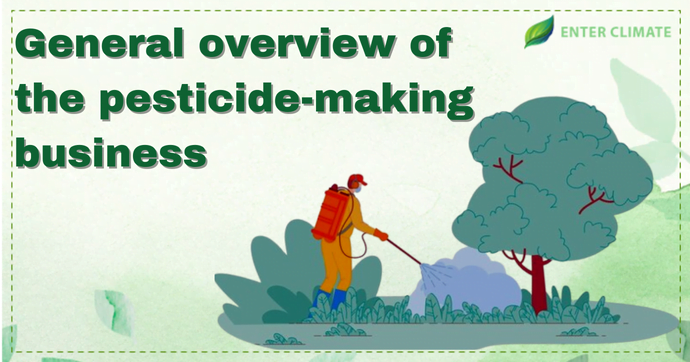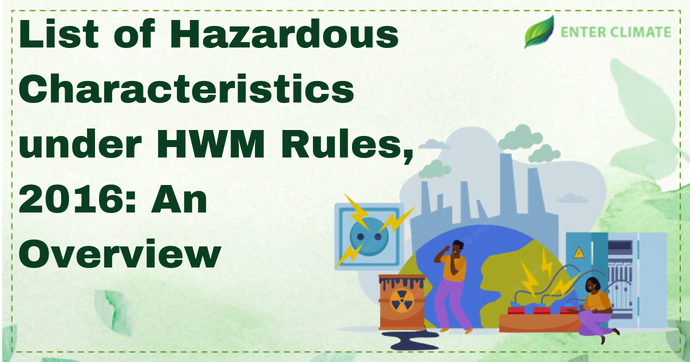How to Start a Tyre Pyrolysis Plant in India?
 24 May, 2023
24 May, 2023 
A tyre pyrolysis plant is a Waste to Energy (WTE) model that converts waste tyres into pyrolysis oil. Apart from used tyres, a WTE plant can be used to convert waste plastic into useful fuel oil and valuable diesel. WTE plants are hugely popular among businesses and enjoy the support of environmental agencies that are monitoring waste management in the country. WTE process is positively impacting our environment by disposing of waste in an environmentally sound manner and generating handsome profit for the plant owner as well. Along with these benifits, there is a high acceptance of pyrolysis method for the treatment of scrap tires as the derived oils and syngas can be used as biofuels, feedstock (carbon black) etc., this business proposition will be quite a lucrative investment. The Pyrolysis oil (or bio-oil) has higher calorific value, low ash, low residual carbon and low sulphur content. Pyrolysis Plants prevents the disposal of hazardous waste (oil, plastic, rubber etc.) from landfill. This oil can be used as fuel for steam, construction/highway aggregate and can provide superior insulation. This write-up will guide you on how to start a tyre pyrolysis plant in India.
Popular Tyre Waste Recycling Businesses in India
In India, waste and discarded tires are recycled using various methods, such as retreading, mechanical recycling and waste-to-energy pyrolysis techniques. The following are the tire recycling businesses in India.
Collection and Storage of waste tires Business
Waste tires are collected from various sources, such as tire dealers, garages, intotyre yards that are designed as per the guidelines issued by CPCB. These business sort tyres based on their size, type, and condition and supply it to tyre recyclers, retreaders and pyrolysis plants.
RetreadingBusiness
Retreading is a process of reusing the worn-out tire by replacing the worn-out tread with a new one. Retreading involves buffing the tire to remove worn-out tread, applying new tread material, and curing the tire in a specialized oven. Retreading is also emerging as a popular business and has been recognized as a crucial link in the tyre recycling sector.
Pyrolysis oil (Waste-to energy)Business
Pyrolysis is a process of heating the waste tires in the absence of oxygen to break down the complex organic compounds into simpler molecules, such as pyrolysis oil, gas, and char. The pyrolysis process produces pyrolysis oil, which can be used as a fuel, and carbon black, that can be used as a filler in various industrial applications.
Mechanical/Physical Recycling Business
Mechanical recycling involves shredding the waste tires into smaller pieces and then using them as raw material in various applications, such as playground surfaces, sports fields, and road construction.Some waste tires are reused or repurposed, such as by converting them into tire swings, planters, and other decorative items.
Waste Tyre Pyrolysis Oil Business
Tyre pyrolysis oil is made in India by pyrolysis technique, which involves heating waste tires in the absence of oxygen (anerobic process) to break down the complex organic compounds into simpler molecules, such as pyrolysis oil, gas, and char. The following is an overview of the process of making tyre pyrolysis oil in India:
How tyre pyrolysis oil is made
Collection and sorting of waste tires: the journey of how to start a tyre pyrolysis plant begins with the collection stage. The waste tires are collected and sorted based on size, type, and condition.
Shredding of tires: The waste tires are shredded into smaller pieces to facilitate the pyrolysis process.
Feeding the shredded tires into the pyrolysis reactor: The shredded tires are fed into the pyrolysis reactor, which is heated to around 400-500°C without oxygen.
Pyrolysis of the tires: The shredded tires are pyrolysed in the reactor, which breaks down the complex organic compounds into simpler molecules, such as pyrolysis oil, gas, and char.
Separation of pyrolysis oil: The pyrolysis oil is separated from the gas and char using a condenser and a series of filters.
Refining of pyrolysis oil: The pyrolysis oil is refined to remove impurities and improve its quality, such as by distillation, hydro-treating, and fractionation.
Storage and distribution: The refined pyrolysis oil is stored in tanks and then distributed for use in various applications, such as fuels for boilers, generators, and industrial processes.
It is important to note that tyre pyrolysis oil in India is subject to various regulations and guidelines, including the Hazardous and Other Wastes (Management and Transboundary Movement) Rules, 2016, and the Pollution Control Board (PCB) regulations[1]. The pyrolysis process must be carried out in a controlled and safe manner to minimise environmental pollution and health hazards. Also, importing used tyres for the purpose of pyrolysis is prohibited.
Steps in Starting a tyre pyrolysis plant
If you are wondering How to start a tyre pyrolysis plant, you will be needing to the following stages of the business setup process.
Step 1: How to start a tyre pyrolysis plant: Conduct market research
Before starting a tyre pyrolysis plant, it is essential to conduct proper market research to identify the demand for pyrolysis oil, sourcing of waste tyre and other competing products in the local market. This will help you determine the potential profitability of the business.
Step 2: How to start a tyre pyrolysis plant: Secure Funding
You will need to secure the needed funding to purchase the equipment and cover the initial operating costs. This can be done through bank loans, venture capital, or other funding sources.
Step 3: How to start a tyre pyrolysis plant: Select a suitable location
You must select a suitable location for your tyre pyrolysis plant that is easily accessible and has adequate infrastructure, such as power and water supply. The site should also comply with local zoning regulations and environmental guidelines.
Step 4: How to start a tyre pyrolysis plant: Purchase equipment
You will need to purchase equipment required for the pyrolysis process, such as a pyrolysis reactor, condenser, scrubber, and storage tanks. You may also need to buy auxiliary equipment, such as a shredder, conveyor belt, cans etc.
Step 5: How to start a tyre pyrolysis plant: Hire personnel
You will need to hire personnel to operate and manage the tyre pyrolysis plant. This may include a plant manager, operators, maintenance personnel, and administrative staff.
Step 6: How to start a tyre pyrolysis plant: Obtain the necessary licenses and permits
You will need to obtain a series of licenses and permits from the local authorities, such as the concerned State Pollution Control Board (PCB), the State Industrial Department, labour department and the Ministry of Environment and Forests (MoEF). This list of licenses and permits can include
Business Registration: Business registration, also called incorporation certificate, is vital for any kind of business setup, including production or recycling units
Pollution NOC from SPCB/ PCC: 1. In the case of ‘Waste to Energy Plants, the industrial discharge is mainly air polluting, and a substantial quantity of water is used in the process, so the pyrolysis plant is categorised in the red category. In case DG sets of 5 MVA & more is used, the emissions of SO2 will take place due to the use of liquid fuel. Therefore, the unit must apply to the SPCB at the OCCMs portal for Consent to Establish CTE and then Consent to Operate CTO. The documents needed in this case will include
The following documents are required for the NOC Pollution Control Board:
- Layout plan of the industry (Details of sources related to sewage treatment and emissions must be mentioned along with the plan)
- Information on DG set
- Sheet showing information related to process flow
- Analysis report relating to solid waste, effluent, hazardous wastes and fuel gases
- Information on the instruments installed for pollution control
- Quality Report of air emission analysis
- Consent Fee
- Environmental Clearance (if applicable)
- Details of water requirements
- Diagrammatic Representation of the Monitoring Facility
- CGWA NOC (if required).
Factory license: for this license, the proponent has to apply to the Labour departmentof the state in which the unit is proposed to be set up. The common documents needed for obtaining this license can include schematics of the plant, detail of location, detail about machinery/ equipment and the manufacturing process, land ownership/ lease proof type flow chart of the manufacturing process etc.
MSME Registration: An enterprise shall be classified as a micro, small or medium enterprise based on investment in the unit, machinery and turnover falls in aspecified bracket not exceeding five crore rupees: micro, not exceeding fifty crore rupees: small and not exceed two hundred and fifty crore rupees: medium). A permanent registration number is given to the Udyam (business)after the registration. There is no need for renewal of this registration. Having PAN and GSTIN is required for Udyam Registration with effect from 01.04.2021.
Hazardous Waste Management Authorisation: The entrepreneur must apply for waste management authorisation and ensure that he follows the SOP and other regulations specified by CPCB for properly recycling and managing tyre waste. The documents.
EPR Registration: MoEFCC, in 2022, laid down the EPR responsibilities of producers, recyclers and retreaters of tyres by notifying the HWM Amendment Rules,2022. This has made the EPR registration for Waste Tyres must for these entities on the CPCB’s centralised EPR portal mandatory. The centralised portal for the waste tyre management system has become active, and it is mandatory for all the stakeholders listed above to register themselves to continue operations in the country. The present EPR obligation module is limited to online submission of information related to quantities of tyres introduced into the market by producers and generation of EPR obligation. The CPCB will issue a registration number with a validity of two years. Applicants will have to renew the registration in their specific categories after every two years.
Conclusion
Once you have obtained the licenses and permits, secured funding, purchased the equipment, and hired personnel, you can start the operations of your tyre pyrolysis plant. It is important to run the plant in compliance with local regulations and environmental guidelines to ensure the safe and sustainable management of waste tires. Starting a tyre pyrolysis plant in India can be a tiresome and time consuming process, and it is recommended to take the assistance of professionals and guidance in the legal obligations to ensure proper compliance with all regulatory requirements and best practices when researching how to start a tyre pyrolysis plant.
Read our Article:An Overview Of The Amendments In The Hazardous Waste Rules, 2016-EPR For Waste Tyres













